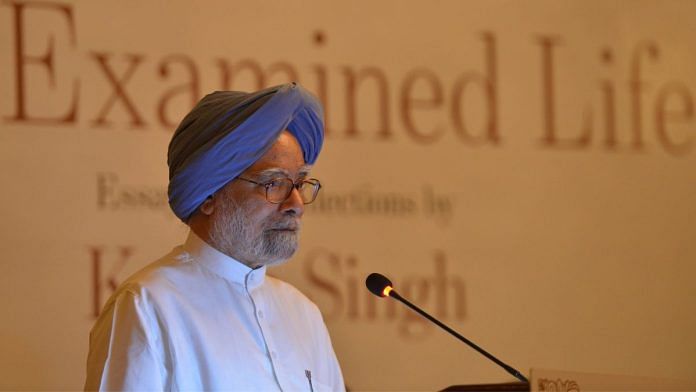Dr Manmohan Singh and my parents were neighbours in Panjab University, Chandigarh. Singh perhaps knew me from the day I opened my eyes in this world. His wife, Gursharan Kaur, my mother, late Dr Amrit Kaur and Sardar Parkash Singh Badal’s wife, Sourinder Kaur Badal, were all classmates in Victoria school, Patiala. So, my parents had a long association with Singh and his family. There was a very fond personal relationship. He guided me, and of course, then I had the privilege of serving as the Minister of Information & Broadcasting in his government.
Singh was actually very media friendly. In fact, he interacted with the press 117 times during his decade-long tenure as Prime Minister.
Contrary to the perception that he was diffident, he was actually quite forthcoming, and he would interact with the media, both on and off record. I remember a long meeting that he held with the Editors Guild of India in 2013, if I recall correctly. He had clarity of thought and could express what others might take a paragraph to say in just one sentence.
Also read: My fanboy relationship with Manmohan Singh endured for 3 decades: Rajeev Chandrasekhar
Practitioner of policy
Legacy: First and foremost, a brilliant economist and profound economic administrator. He was the architect of India’s liberalisation and globalisation in 1991 and played a key role in the India-US civil nuclear deal, securing a unique waiver for India from the Nuclear Suppliers Group despite not signing the Non-Proliferation Treaty. He managed India’s International Relations beautifully despite opening up a very profound interaction with the US, he balanced both Russia and China.
Under his leadership, a record number of economic and border management agreements were signed with China. If the Manmohan-Musharraf formula had would have come to fruition with Pakistan, the history of the South Asian region could have been very different. On the other hand, he was the architect of the most revolutionary social security architecture. With Sonia Gandhi, the social security architecture that he’s created has withstood the test of time. It continues to be the principal social safety net for a large vulnerable section of people. The Right to education, the National Food Security Act, and the street vendors legislation—a lot was accomplished during his time.
He was a very sober practitioner of policy and not a public relations chap. From governance standpoint, Singh steered the ship of the Indian state in a very wise and a profound manner during his tenure as prime minister.
The former Prime Minister was not apolitical by any stretch of imagination. He had some very finely honed political instincts. It’s another matter that he was not crass in the sense of realpolitik. His gentlemanliness and his sober demeanour were often misunderstood. But if Manmohan Singh had been any lesser politician, he won’t have risked his 146-member government on the vagaries of a parliamentary vote over the India-US nuclear deal.
Manish Tewari is a member of Parliament. He served as Minister of Information and Broadcasting in Manmohan Singh’s government. Views are personal.





A fine tradition, also followed in the United States, for a press contingent to travel with the head of government. Especially on overseas trips. To interact informally and on record with him and also senior officials. Acknowledging that in a democracy, the media, acting on behalf of citizens, has a right to know what the government is doing, and why.
Manmohan Singh was a Gandhi Toady working on the whims and fancy of Sonia Gandhi. Further the real credit for economic reforms go to Narasimha Rao who brought true economic liberalization to India